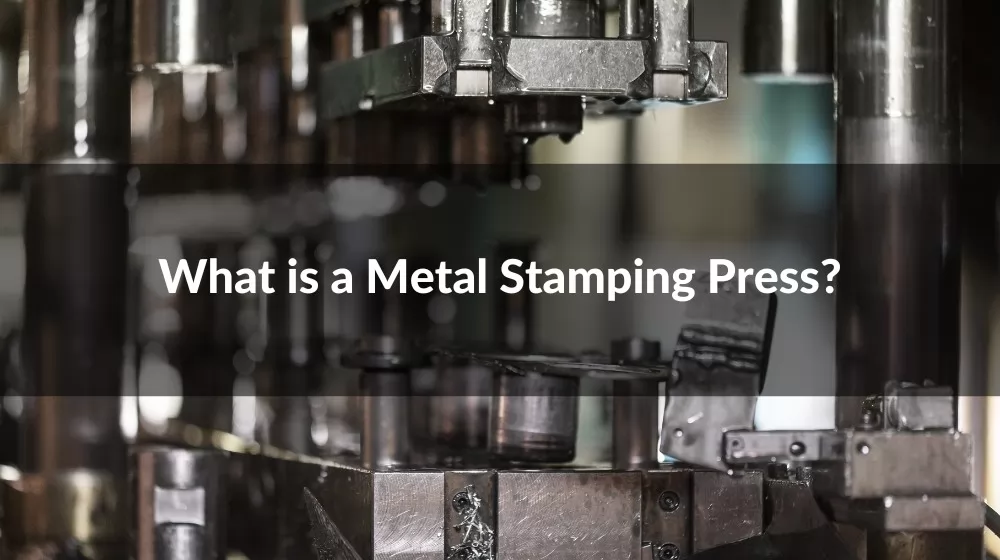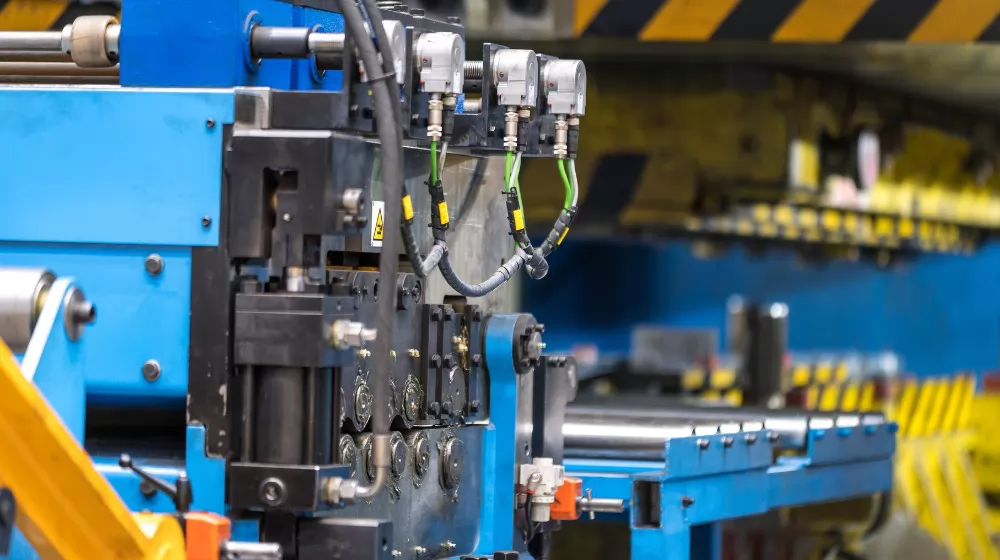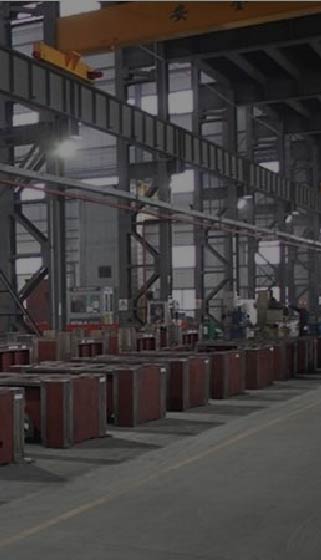








In this comprehensive guide, we delve into the fascinating realm of metal stamping presses. Whether you're a seasoned manufacturer or new to the field, understanding the intricacies of these powerful machines is key to optimizing your production process. From their fundamental workings to selecting the right press for your needs, we cover it all. Let's embark on this journey to unveil the secrets behind these manufacturing marvels, transforming metal sheets into high-quality components.
When it comes to manufacturing, efficiency and precision are the cornerstones. This is where a metal stamping press plays a pivotal role. In essence, it's a powerhouse of transformation, shaping metal sheets into specific forms and designs. Think of it as a highly specialized, powerful machine that uses tooling and dies to transform flat metal sheets into parts or products that are uniform in quality and consistency.
The technology behind a metal stamping press is fascinating. It employs a combination of speed, pressure, and precision to achieve results that other manufacturing processes can only dream of. From automotive to electronics, the applications are diverse and impactful. The press operates by placing the metal sheet between the die and the press tool, applying significant force to shape the metal into desired forms. This process can include punching, embossing, bending, flanging, and coining, to name a few.
It's not just about brute force, though. The modern metal stamping press is a marvel of engineering, often incorporating advanced technologies like CNC (Computer Numerical Control) to enhance precision and efficiency. This integration of technology ensures that each component produced meets stringent quality standards – a must in industries where even a minor flaw can have significant consequences.
In the dynamic world of manufacturing, staying ahead often means adopting technologies that boost efficiency, reduce costs, and enhance product quality. Investing in metal stamping presses is one such strategic decision that offers a multitude of benefits. Let’s explore why making this investment can be a game-changer for your business.
First and foremost, metal stamping presses offer unparalleled precision. The capability to consistently produce parts with exact specifications is crucial in industries like automotive, aerospace, and electronics, where precision is non-negotiable. This level of accuracy minimizes waste and ensures that each component fits perfectly into its intended role.
Efficiency is another major advantage. A metal stamping press can produce a high volume of parts in a relatively short amount of time. This is particularly beneficial for large-scale production runs, where time is of the essence. The speed and consistency of these presses mean businesses can meet high demand without compromising on quality.
Cost-effectiveness also comes into play. While the initial investment in a metal stamping press might seem substantial, the long-term savings are significant. Reduced labor costs, lower material wastage, and minimal maintenance requirements contribute to a favorable return on investment. Additionally, the durability of these presses means they can serve your production needs for many years, further enhancing their cost-effectiveness.
Mechanical presses are the workhorses of the stamping world. Known for their reliability and speed, they use a motor-driven flywheel to generate energy, which is then transferred to the press mechanism. Ideal for high-volume, repetitive tasks, these presses are a staple in many manufacturing plants. Their precision and ability to operate at high speeds make them suitable for a wide range of stamping applications.
Hydraulic presses offer versatility and power, using hydraulic cylinders to generate compressive force. With the ability to apply steady, controlled force, they are perfect for applications requiring deep drawing and complex shapes. Their adaptability to various materials and thicknesses makes them a preferred choice for specialized stamping operations.
The servo press represents a technological leap in stamping press design. These presses use servomotors for energy, offering unparalleled control over the stamping process. This precision control allows for complex, intricate shapes with high levels of accuracy. Servo presses are ideal for applications where material properties vary or where extreme precision is required.
As the name suggests, high-speed presses are designed for applications where speed is paramount. They are typically used in mass production environments where time is critical. These presses can operate at incredibly high speeds while maintaining accuracy and consistency, making them essential for large-scale production runs with tight deadlines.
Understanding the anatomy of a metal stamping press is key to appreciating its functionality and capabilities. The main components include the frame, bolster plate, ram, die set, and the drive mechanism. The frame provides the necessary structural support. The bolster plate, typically made of a solid steel block, serves as the base on which the die set is mounted. The ram is a moving component that applies force to the die. The die set, comprising of the punch and die, is where the actual shaping of the metal occurs. Lastly, the drive mechanism, which can vary depending on the type of press, is responsible for the movement of the ram.
The operation of a stamping press is a symphony of precision and power. It starts with placing a metal sheet or blank on the bolster plate. The drive mechanism then activates the ram, moving it towards the die set. As the ram exerts force, the die shapes the metal into the desired form. This process can include various operations such as cutting, bending, or drawing. The force and speed of the ram are crucial; they determine the quality of the stamped part. After the operation, the ram retracts, and the finished part is removed, ready for the next cycle. This process is repeated with remarkable speed and accuracy, making the stamping press an indispensable tool in metal fabrication.

The journey of creating precision metal parts begins with material selection. The choice of material not only influences the final product's quality but also its suitability for the intended application. Factors like strength, flexibility, and corrosion resistance play a crucial role in this decision-making process. Common materials used in stamping include various grades of steel, aluminum, copper, and brass.
Design and planning are the blueprints of success in metal stamping. This step involves creating detailed designs of the parts to be produced, considering the specifications and tolerances required. Advanced software tools are often used for this purpose, ensuring accuracy and efficiency in the design phase. This stage also includes planning the sequence of stamping operations and setting up the press and dies accordingly.
Cutting and blanking are the initial steps in shaping the metal. Cutting involves removing excess material to create a specific shape, while blanking is the process of cutting the workpiece into individual pieces, ready for further processing. These operations require precision and control to ensure the parts meet the required dimensions.
Bending and forming are the processes where the metal starts taking its final shape. Bending involves creating angles in the metal, while forming shapes it into complex geometries. These processes are crucial for creating parts with the desired functional and aesthetic properties.
Drawing and stretching are techniques used to shape metal into deep or complex forms. Drawing pulls the metal into a die to create a deep part while maintaining its thickness, whereas stretching extends the metal to achieve the desired shape and size. These methods are essential for creating components with specific dimensional requirements.
After stamping, the parts often undergo trimming to remove excess material and finishing to enhance their appearance and properties. Finishing techniques can include deburring, polishing, and coating, which not only improve the look of the parts but also their resistance to wear and corrosion.
Quality control is paramount in the metal stamping process. This involves rigorous inspection of the parts to ensure they meet the required standards and specifications. Measurements, visual inspections, and functionality tests are part of these quality control measures, ensuring that every stamped part adheres to the highest quality standards.
The automotive industry heavily relies on metal stamping presses for the production of high-precision, high-quality metal parts. These presses are used to create everything from engine components to body panels, offering the speed and efficiency necessary for mass production. The precision and consistency provided by metal stamping presses are crucial in meeting the automotive industry's stringent safety and quality standards.
In aerospace and defense, the stakes are incredibly high when it comes to the quality of metal components. Metal stamping presses are invaluable in this sector due to their ability to produce parts that meet exact specifications with outstanding precision. Components for aircraft, spacecraft, and defense equipment require the utmost reliability, and metal stamping presses deliver this by producing parts that consistently meet the industry's exacting standards.
The consumer electronics industry is another significant beneficiary of metal stamping presses. As electronic devices become smaller and more complex, the need for precisely stamped metal components increases. Metal stamping presses enable the production of small, intricate parts used in smartphones, computers, and other electronic gadgets, maintaining the high level of precision and quality these products demand.
Selecting the ideal metal stamping press for your manufacturing needs is a critical decision that can significantly impact your operation's efficiency and output quality. Here are some key factors to consider when making this choice.
Begin by assessing your specific needs. Consider the types of parts you'll be producing, the materials you'll be using, and the volume of production. Each stamping press type has its strengths, so understanding your requirements will help you determine whether a mechanical, hydraulic, servo, or high-speed press is the best fit.
The capacity of the press, measured in tons, is a critical factor. It should match the demands of the tasks it will perform. Additionally, consider the versatility of the press. If your production involves a wide range of parts and materials, a press with adaptable features and capabilities will be more beneficial.
Precision and control are paramount, especially for industries where component tolerances are tight. Evaluate the press's ability to maintain accuracy over high-volume runs. Servo presses, for instance, offer superior control and precision.
The durability of a stamping press determines its lifespan and the frequency of maintenance required. A robust and well-built press, while potentially more costly upfront, can offer greater reliability and lower long-term maintenance costs.
Finally, consider the reputation of the metal stamping press manufacturer. Choose a manufacturer known for quality products and good customer support. After-sales service, including access to spare parts and technical assistance, is vital for maintaining the efficiency and longevity of the press.
As we conclude our exploration of the dynamic world of metal stamping presses, remember that the key to unlocking the full potential of these machines lies in choosing a reliable and experienced manufacturer. JDM, a leader in the field from China, offers a range of top-quality metal stamping presses tailored to meet your specific production needs. With a commitment to innovation and customer satisfaction, JDM stands as your trusted partner in the journey towards manufacturing excellence. Discover more about their offerings and how they can enhance your operations by visiting www.jdmpresses.com.






